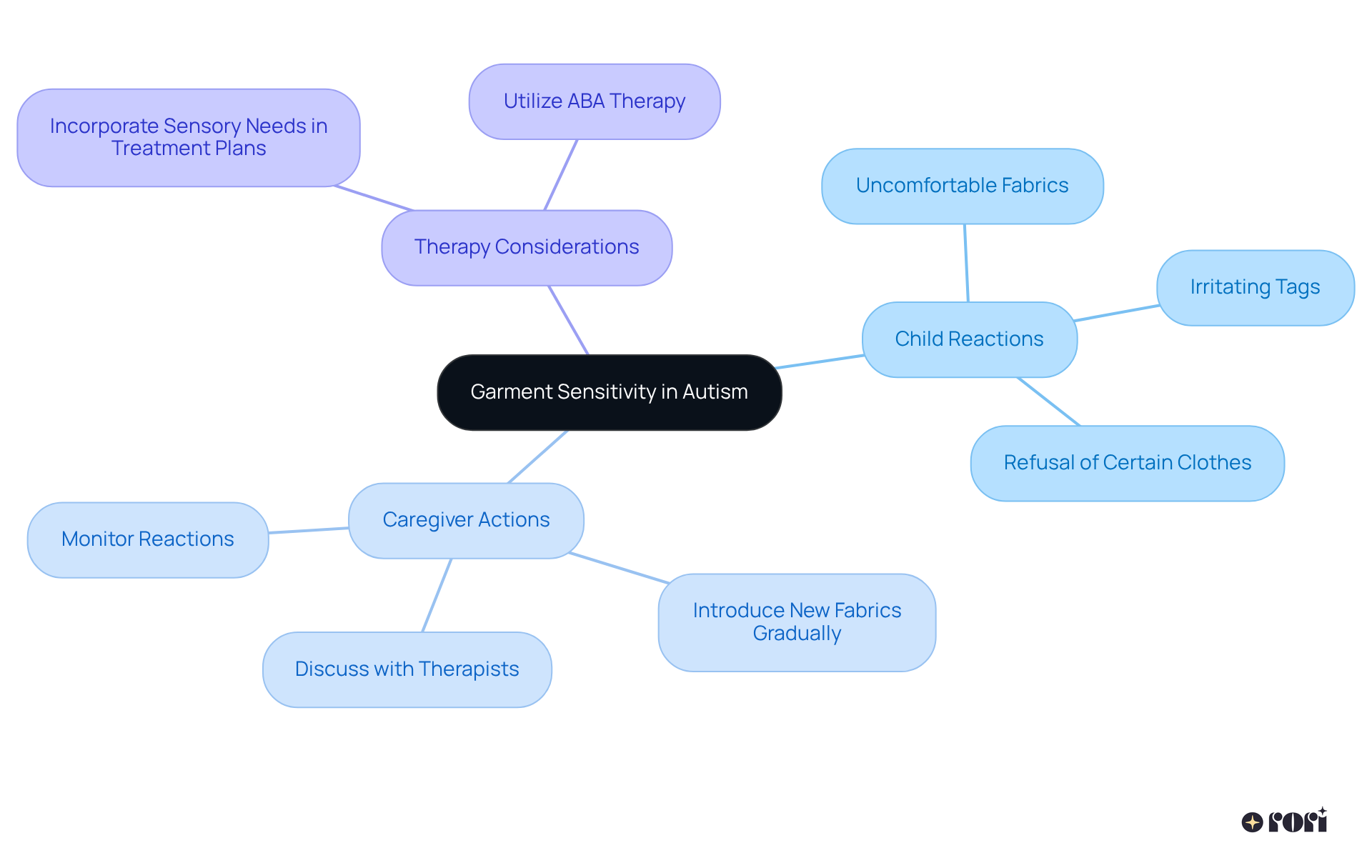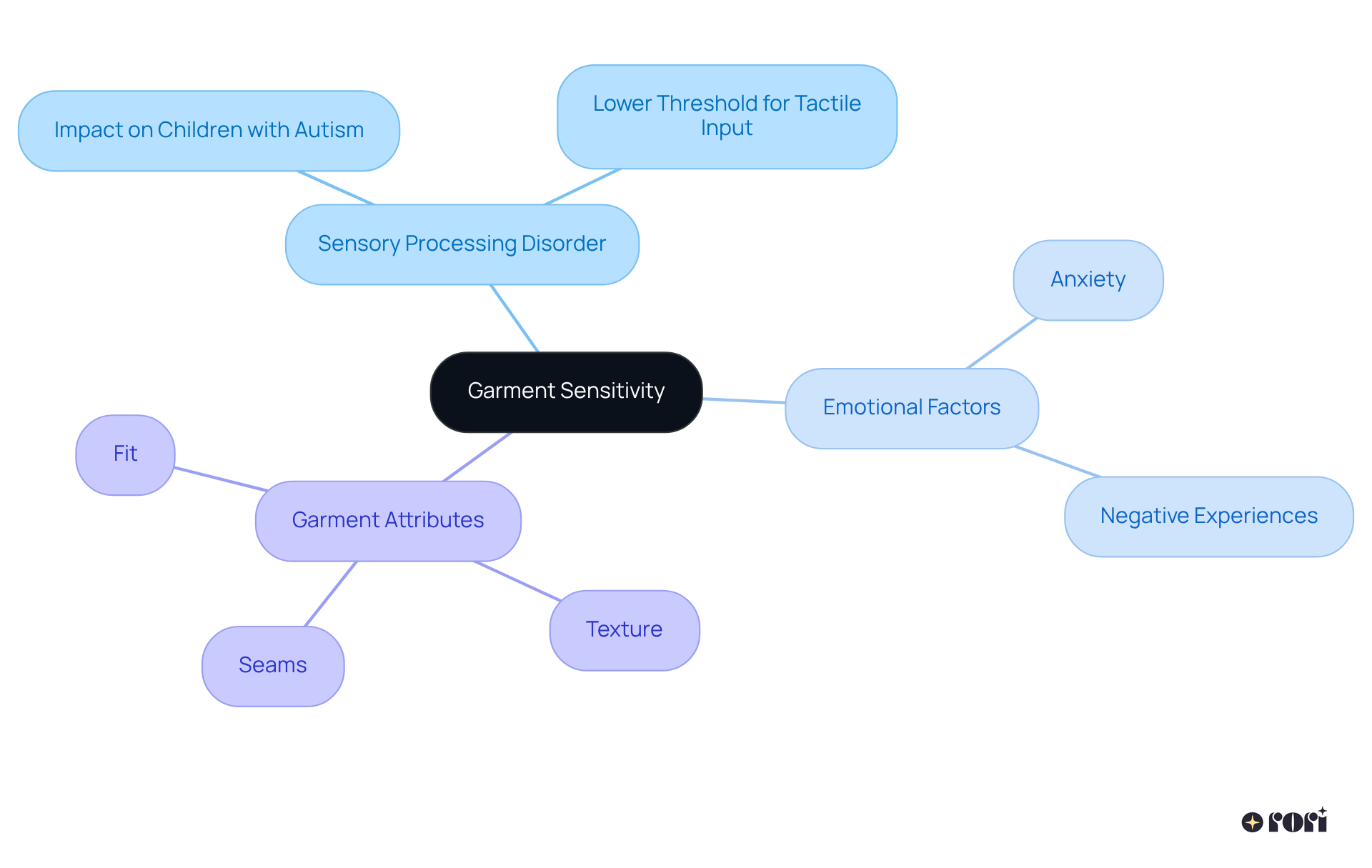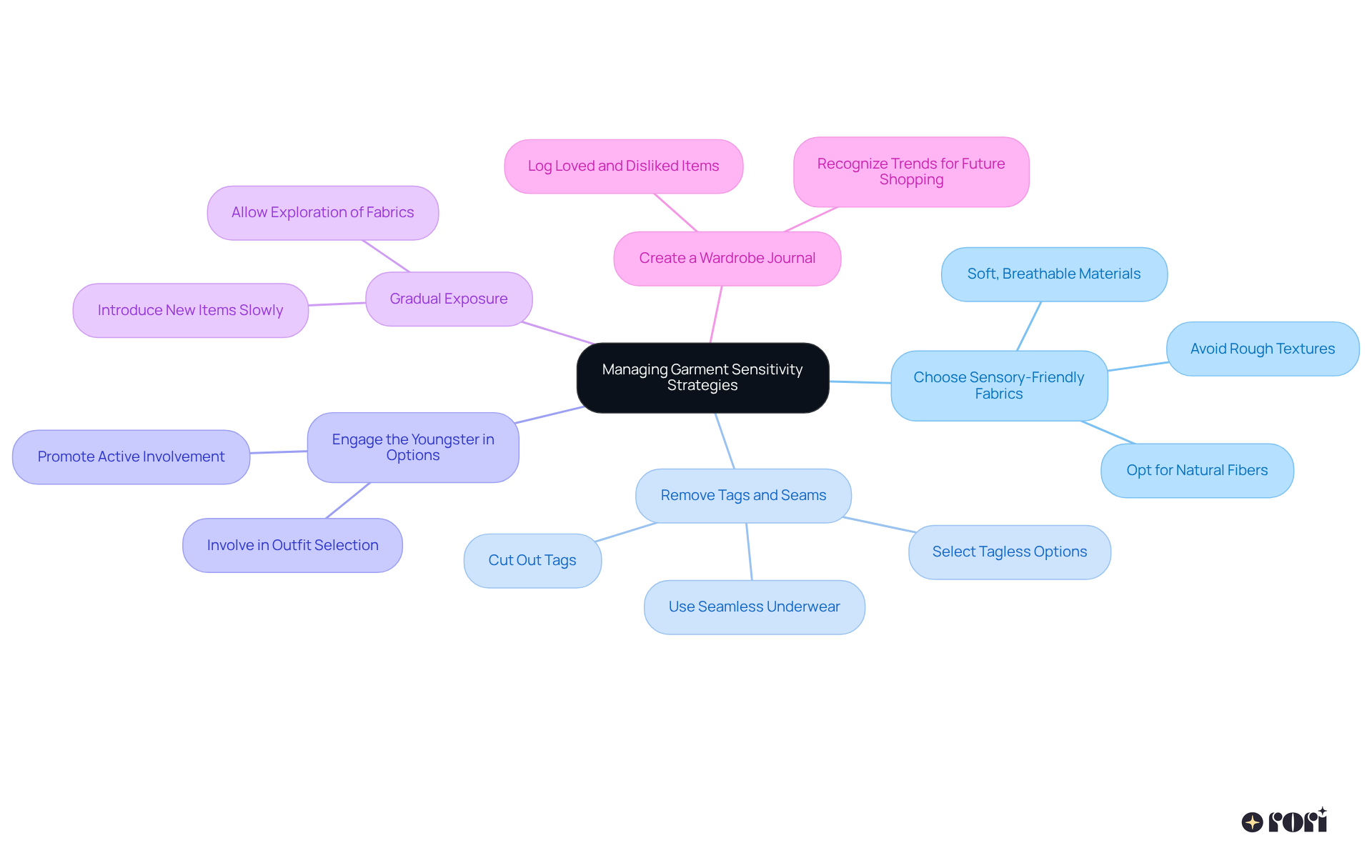This article dives into effective management strategies for garment sensitivity in children with autism, highlighting the importance of understanding their unique sensory needs. It shares practical tips, like:
These strategies not only support positive behavioral outcomes but also create a nurturing environment for your child.
Let’s explore this together! By focusing on these approaches, we can help make daily routines smoother and more enjoyable for both you and your child. Remember, you’re not alone in this journey; we’re here to help you every step of the way!
Garment sensitivity is a significant yet often overlooked aspect of the autism spectrum, impacting how children interact with their clothing. Many young individuals feel discomfort from specific fabrics, seams, or tags, which can lead to frustration and avoidance of certain garments. Let’s explore this together!
This article delves into effective management strategies that empower caregivers to create a supportive environment tailored to their child's unique sensory needs.
But what happens when the very clothing meant to provide comfort becomes a source of distress? Exploring the complexities of garment sensitivity and the role of Applied Behavior Analysis (ABA) therapy can unveil solutions that enhance both comfort and emotional well-being for children on the spectrum.
We’re here to help you every step of the way!
Garment responsiveness in autism is all about how children react to the feel of their clothes. Some kids with autism might find certain fabrics, seams, or tags uncomfortable or even painful. This sensitivity can lead to significant discomfort, making it tough for them to wear typical clothing. Understanding this is crucial for parents, as it helps create a supportive environment that caters to their child's unique sensory needs.
For instance, a child might refuse to wear jeans because the fabric feels too rough, or they might struggle with shirts that have tags, which can be irritating against their skin. By recognizing these signs, caregivers can adjust clothing choices as part of a broader, compassionate approach to care. Integrating these considerations into personalized treatment plans, along with active involvement from caregivers, can greatly improve comfort and support progress in therapy.
Plus, it’s worth noting that Applied Behavior Analysis (ABA) therapy is the only scientifically backed treatment for autism that insurance covers, making it easier for families to access vital resources. Caregivers can take proactive steps by chatting with therapists to find the best clothing options, slowly introducing new fabrics, and keeping an eye on how their child reacts to different outfits. Let’s explore this together and ensure our kids feel comfortable and supported every step of the way!

Garment discomfort can come from a variety of sources, and one significant factor is sensory processing disorder. This condition affects how the brain interprets sensory information. For children with autism, they might have a lower threshold for tactile input, which means they can feel discomfort from sensations that others might find completely normal. Think about it: the texture of the fabric, the presence of seams or tags, and even how a garment fits can all contribute to this sensitivity.
But it doesn't stop there! Emotional factors, like anxiety or previous negative experiences with certain clothes, can amplify this awareness. Understanding these causes allows caregivers to approach clothing choices with empathy and insight. This understanding can lead to better outcomes for the child. So, let’s explore this together and find ways to make clothing more comfortable for our little ones!

Managing garment sensitivity can feel challenging, but there are several friendly strategies caregivers can use to enhance support and empower themselves in their roles:
Choose Sensory-Friendly Fabrics: Opt for soft, breathable materials like cotton or bamboo. These are less likely to irritate sensitive skin. Avoid rough textures and synthetic fabrics that can make things worse. This choice not only ensures comfort for your little one but also reflects informed decision-making.
Remove Tags and Seams: Consider cutting out tags or selecting tagless apparel options. Also, think about using seamless underwear and socks to reduce discomfort. This simple step can help alleviate stress for both the young one and the caregiver.
Engage the Youngster in Options: Let your child take part in choosing their outfits. This empowers them and helps them feel more in control of their sensory experiences. It aligns beautifully with the principles of ABA, promoting active involvement and enhancing family dynamics.
Gradual Exposure: Introduce new clothing items gradually. Allow your little one to explore and touch the fabric before wearing it. This can help reduce anxiety associated with new textures and improve behavioral outcomes through positive experiences.
Create a Wardrobe Journal: Keep a log of which clothing items your child loves or dislikes. This can help you recognize trends and simplify future shopping, making informed choices that enhance comfort and lessen stress for everyone involved.
By applying these strategies, caregivers can create a more comfortable clothing experience for kids dealing with garment discomfort. Not only does this enhance their ability to support their child's behavioral goals, but it also provides empowerment and education through these practices. Let’s explore this together and make clothing a joyful experience for our little ones!

Applied Behavior Analysis (ABA) garment therapy can be a fantastic way to help manage sensitivity. At Rori Care, our ABA therapists work closely with kids to develop coping strategies and desensitization techniques. For instance, they might introduce different clothing textures gradually in a safe setting, encouraging positive reactions to various fabrics.
But it doesn’t stop there! ABA also helps young individuals express their discomfort more effectively, allowing parents to respond in a supportive way. By using ABA garment strategies, caregivers can create a nurturing environment that addresses garment sensitivity while also boosting emotional well-being and independence in dressing.
This tailored support, combined with enhanced education for providers, can significantly improve behavioral outcomes and reduce daily clothing conflicts. Ultimately, this leads to a better quality of life for our little ones. At Rori Care, we offer both individual and group therapy to support caregivers and children on this journey. Let’s explore this together! We’re here to help you every step of the way!
Garment sensitivity is a crucial aspect for children on the autism spectrum, impacting how they interact with clothing and their overall comfort. Recognizing and addressing this sensitivity is key for caregivers, as it helps create an environment that meets their child’s unique sensory needs and nurtures emotional well-being.
This article shares various strategies for managing garment sensitivity, such as:
Plus, the role of Applied Behavior Analysis (ABA) therapy is highlighted as a proven approach to help children develop coping mechanisms and feel more comfortable with clothing. By understanding the causes and implementing these strategies, caregivers can greatly improve their child's daily experiences.
Ultimately, addressing garment sensitivity is about more than just selecting the right clothes; it’s about empowering children and creating a nurturing environment that supports their growth and independence. Caregivers are encouraged to actively engage with their children and utilize available resources, like ABA therapy, to ensure that clothing becomes a source of comfort, not distress. By taking these steps, we can help transform the quality of life for children with autism, making clothing a joyful experience rather than a challenge. Let’s explore this together and make a positive change!
What is garment sensitivity in autism?
Garment sensitivity in autism refers to how children with autism react to the feel of their clothes, including discomfort caused by certain fabrics, seams, or tags.
How does garment sensitivity affect children with autism?
Children with autism may find certain clothing uncomfortable or painful, leading to significant discomfort that makes it difficult for them to wear typical clothing.
Why is understanding garment sensitivity important for parents?
Understanding garment sensitivity is crucial for parents as it helps them create a supportive environment that caters to their child's unique sensory needs.
What are some examples of clothing issues faced by children with autism?
A child might refuse to wear jeans due to rough fabric or struggle with shirts that have irritating tags against their skin.
How can caregivers support children with garment sensitivity?
Caregivers can adjust clothing choices, integrate these considerations into treatment plans, and actively involve therapists to improve comfort and support progress in therapy.
What role does Applied Behavior Analysis (ABA) therapy play in addressing garment sensitivity?
ABA therapy is the only scientifically backed treatment for autism that insurance covers, making it easier for families to access resources that can help address garment sensitivity.
What proactive steps can caregivers take regarding clothing choices?
Caregivers can discuss with therapists to find suitable clothing options, slowly introduce new fabrics, and monitor their child's reactions to different outfits.